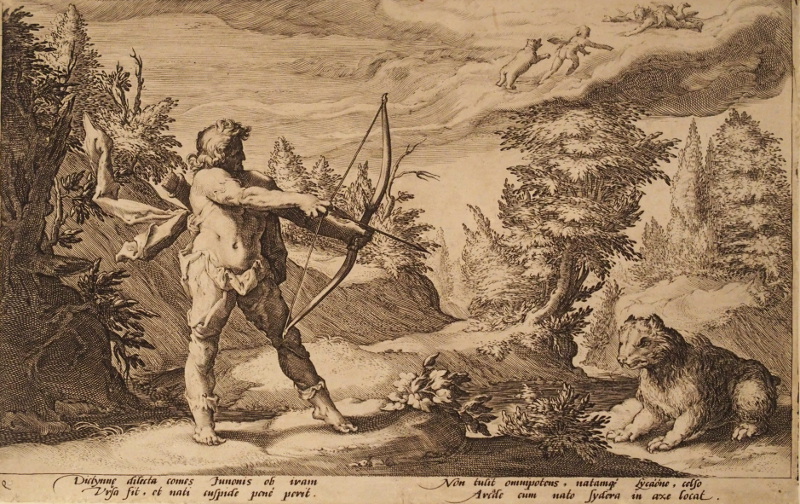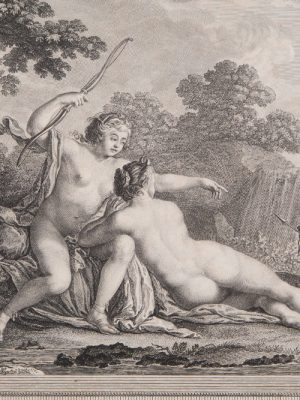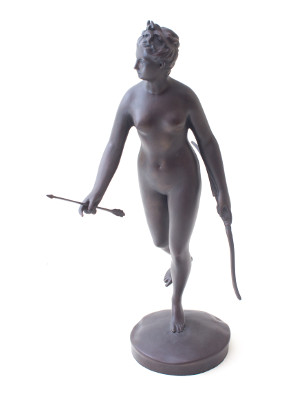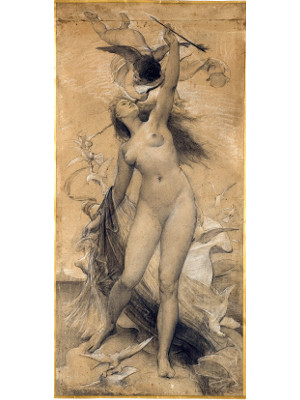Calisto turned into a bear
Anonymous after Hendrik GOLTZIUS (1558 – 1617)
The Netherlands
1590
Etching on vellum paper
Ancient fund of the Archery and Valois Museum
Inv. SN8
______________
Several versions of the myth of Ursa Major’s birth are known. According to the version of the myth by Ovid in his Metamorphoses, the nymph Callisto was Diana’s favorite lady-in-waiting and remained chaste like all the other young women. But, one day, Zeus managed to fool Callisto into mating and she got pregnant. When Diana discovered her pregnancy, she was enraged and banished her from her entourage. Callisto’s pregnancy also caused Hera, Zeus’ wife to become furious and jealous and after the birth of Callisto’s and Zeus’ son Arcas, she transformed the nymph into a bear. She thus condemned her to go from the status of huntress to that of prey. Several years later, Arcas, knowing nothing of his mother’s fate, almost killed her during a hunt. Seeing this, Zeus intervened and placed Callisto and her son among the stars, forming the constellations of Ursa Major and Ursa Minor.
Especially made to decorate Book II of Ovid’s Metamorphoses by Dutch artist Hendrik Goltzius, the original version of the original etching dates from 1590. It is divided in two planes that illustrate the two episodes of Callisto’s myth. In the lower level, the artist has represented the confrontation between Arcas and his mother transformed into a bear, in a forest and mountain landscape. Not recognizing her, he is about to shoot her with his bow and arrow. His menacing aspect is highlighted by his muscular stature and the overflowing folds of his clothing. In the upper level, Callisto is accompanied to the heavens by a cherub and welcomed by Zeus.















